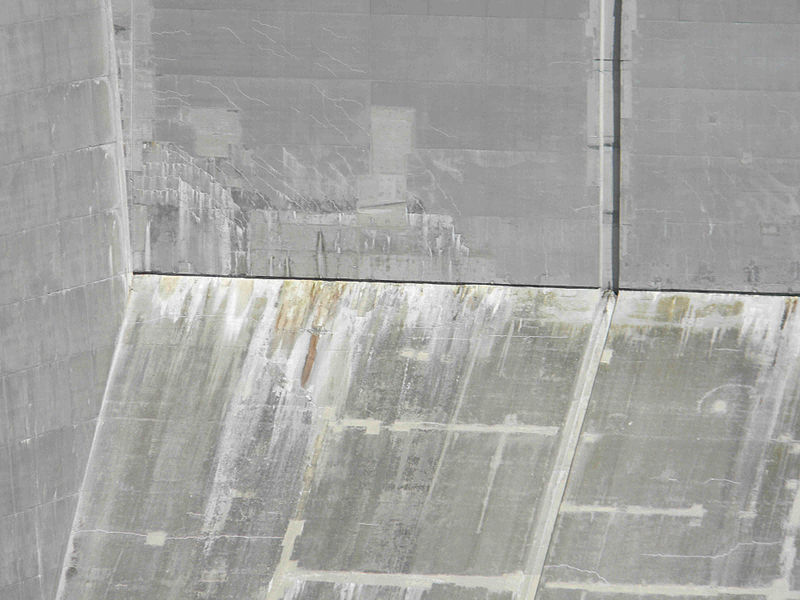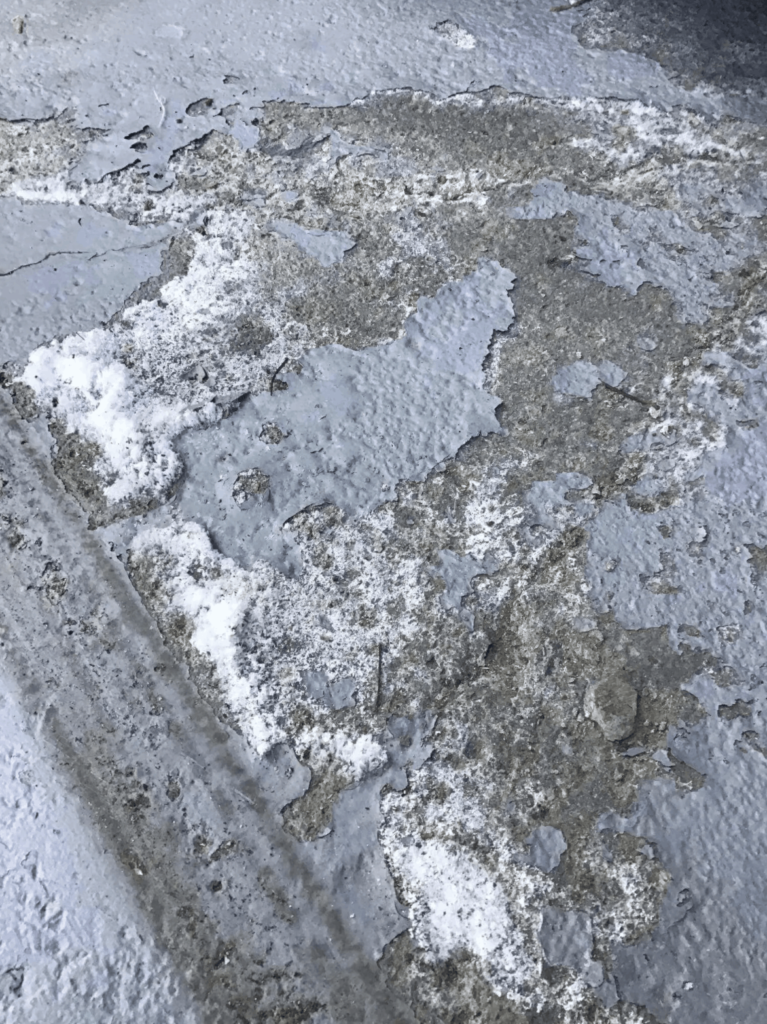Efflorescence is a common problem that occurs on concrete and brick surfaces. It is a white, powdery substance that forms on the surface due to the presence of soluble salts. While efflorescence is not harmful to humans, it can signal potential moisture problems that can cause structural damage to building materials.
When efflorescence occurs, it is important to take action to prevent any potential damage. If efflorescence is found in the basement or on concrete and other structures, it is crucial to identify the source of the moisture and address it immediately. Failure to do so can lead to permanent damage to the structure.
Recurring efflorescence may indicate an ongoing problem of water intrusion that needs to be addressed before it causes permanent damage to the structure. If you notice efflorescence on pavers, it is important to note that it will eventually stop on its own ater the salts in the pavers have dissipated.
While efflorescence is not harmful, white mold is a living organism (fungus) that can be harmful to humans. Mold grows on organic materials like wood and drywall. If you notice white mold, it is important to take immediate action to prevent any potential health risks.
In many cases, efflorescence will disappear on its own over time, usually after the first year of a paver or retaining wall installation. However, if efflorescence persists, it can be removed with special cleaners like the Gator Efflorescence Cleaner. It is recommended to wait about 60 days before applying an efflorescence cleaner.
While efflorescence is not harmful to humans, it can signal potential moisture problems that can cause structural damage to building materials. It is important to identify the source of the moisture and address it immediately to prevent any potential damage. If efflorescence persists, it can be removed with special cleaners. However, if you notice white mold, it is important to take immediate action to prevent any potential health risks.
Understanding the Risks of Efflorescence
Efflorescence is a common problem that can occur on various building materials, including concrete, brick, and stucco. While efflorescence itself is not harmful, it can indicate underlying moisture problems that can lead to structural damage if left unaddressed.
Efflorescence is caused by the migration of salts to the surface of building materials. These salts are typically present in the building materials themselves or in the surrounding soil or water. When moisture enters the building material, it dissolves the salts and carries them to the surface. As the moisture evaporates, the salts are left behind, forming the characteristic white, powdery substance known as efflorescence.
While efflorescence is not a structural issue, it can indicate the presence of moisture problems that can lead to more seious issues. For example, if water is infiltrating the building material, it can weaken its structural integrity over time. Additionally, excess moisture can create a favorable environment for mold and mildew growth, which can pose health risks to occupants.
If you notice efflorescence on your building materials, it’s important to address the underlying moisture problem. This may involve sealing cracks and gaps, installing proper ventilation, or applying a waterproof coating to the surface. In some cases, it may be necessary to remove and replace the affected material entirely.
While efflorescence itself is not a cause for concern, it can indicate underlying moisture problems that can lead to structural damage and health risks if left unaddressed. If you notice efflorescence on your building materials, it’s important to take action to identify and address the underlying issue.

Removing Efflorescence: Is It Necessary?
Efflorescence on pavers is a common occurrence that results from water infiltration and the subsequent deposit of soluble salts on the surface. While efflorescence does not pose a threat to the structural integrity of the pavers, it can be unsightly and reduce their aesthetic appeal. As such, many homeowners wonder whether efflorescence needs to be removed.
The answer to this question is not straightforward and depends on several factors. If the efflorescence is mild and does not significantly impair the appearance of the pavers, it may not require removal. In such cases, the efflorescence will often dissipate on its own over time as the salts naturally leach out of the pavers.
However, if the efflorescence is severe and covers a large portion of the pavers, it may be ncessary to remove it. This is because the buildup of salts can cause long-term damage to the pavers, leading to cracking and other structural issues. In addition, efflorescence can make it difficult to apply sealant or other protective coatings to the pavers, further increasing the risk of damage.
To remove efflorescence, several methods can be used, including pressure washing, chemical cleaning, and mechanical scrubbing. It is important to note that these methods can be labor-intensive and may require the use of specialized equipment or chemicals. As such, it is best to consult with a professional before attempting to remove efflorescence on your own.
While efflorescence does not necessarily need to be removed in all cases, it is important to monitor its severity and take action if necessary to prevent long-term damage to your pavers.
The Effects of Efflorescence on Health
Efflorescence is a common phenomenon that is ofen noticed on concrete and brick surfaces. It is caused by the migration of salts to the surface of these materials, where they crystallize and form a white or grayish powder. However, it is important to note that efflorescence is not harmful and does not pose any health risks to humans.
Unlike mold, which is a living organism that can cause health problems, efflorescence is simply a cosmetic issue that can be easily cleaned with the right tools and techniques. In fact, efflorescence can even be a sign that your concrete or brick is drying out and curing properly.
It is worth noting that while efflorescence is not harmful, it can be a sign of underlying issues such as excess moisture or poor drainage. If left unchecked, these issues can lead to more serious problems such as mold growth, which can cause respiratory problems and other health issues.
Efflorescence does not make you sick and is not harmful to your health. However, it is important to address any underlying issues that may be causing it to prevent more serious problems from developing in the future.
Will Efflorescence Cease Over Time?
Efflorescence is a common occurrence in concrete, brick, and other masonry materials. It is a white or grayish-white powdery substance that appears on the surface of the material. Efflorescence is caused by the migration of salts to the surface of the material. These salts are usually present in the material itself or in the surrounding soil. When water comes into contact with the material, it dissolves the salts and carries them to the surface. As the water evaporates, the salts are left behind and form the powdery substance known as efflorescence.
Many people wonder if efflorescence will eventually stop on its own. The answer is yes, efflorescence will often disappear over time. This is because the salts that are causing the efflorescence will eventually be depleted. In most cases, efflorescence will disappear on its own within the first year of a paver or retaining wall installation.
However, if you don’t want to wait for efflorescence to disappear on its own, there are ways to remove it. Special cleaners like the Gator Efflorescence Cleaner can be used to remove efflorescence. It is important to wait at least 60 days before applying an efflorescence cleaner to ensure that the salts have had time to deplete. Applying a cleaner too soon coud result in the efflorescence returning.
Efflorescence will eventually stop on its own as the salts causing it are depleted. However, if you don’t want to wait for it to disappear, you can use a special cleaner to remove it. Just be sure to wait at least 60 days before applying a cleaner to ensure the best results.

Conclusion
Efflorescence itself is not harmful to human health. It is simply a natural occurrence caused by the movement of water through porous building materials. However, if left unchecked, efflorescence can lead to potential moisture problems that can cause structural damage over time. Therefore, it is important to address any efflorescence found on concrete or other structures and determine the root cause of the issue. While efflorescence can be removed with special cleaners, it is always best to consult with a professional to ensure that the underlying issue is resolved and prevent any further damage.
